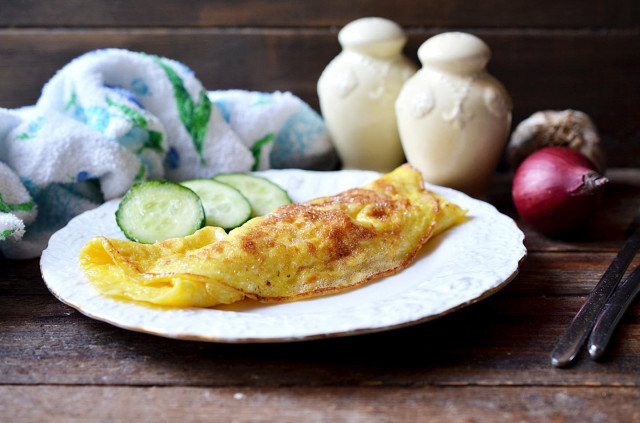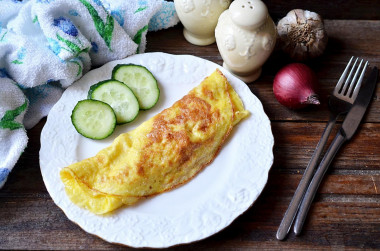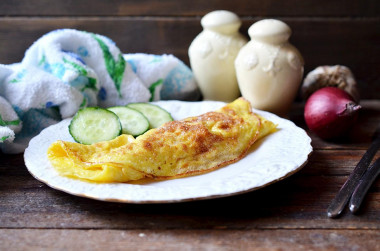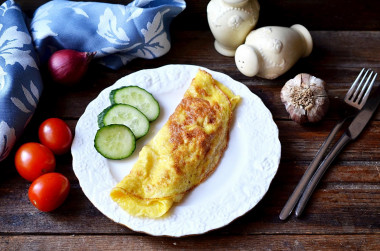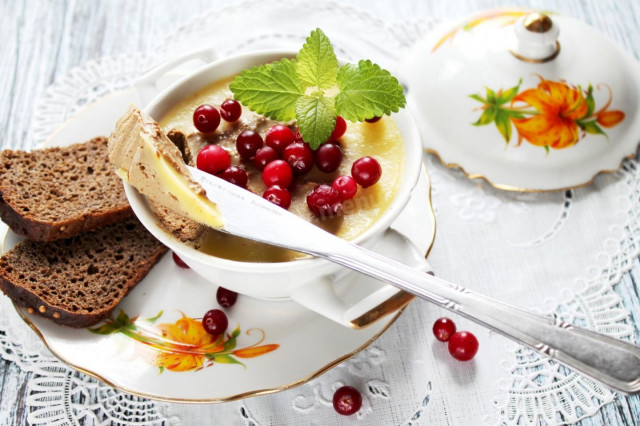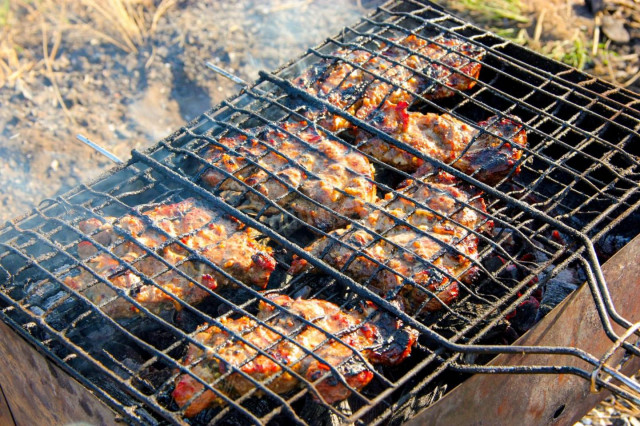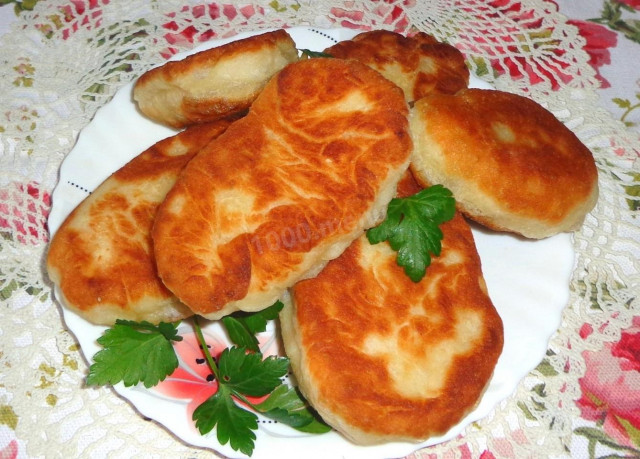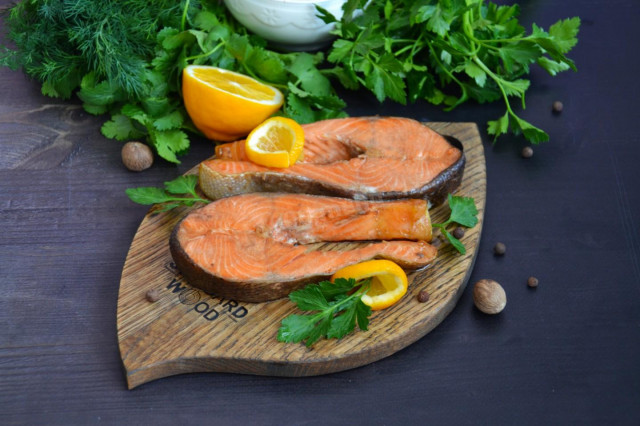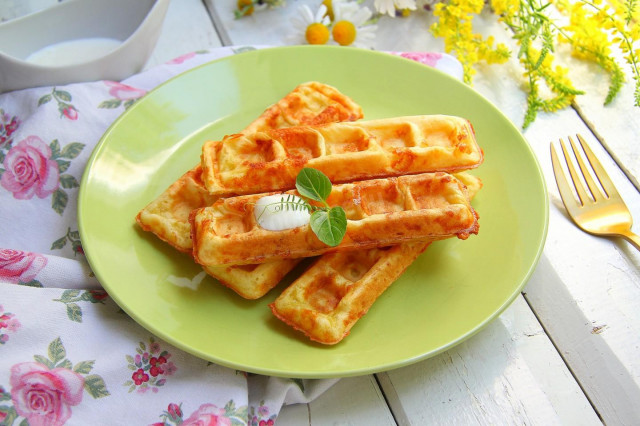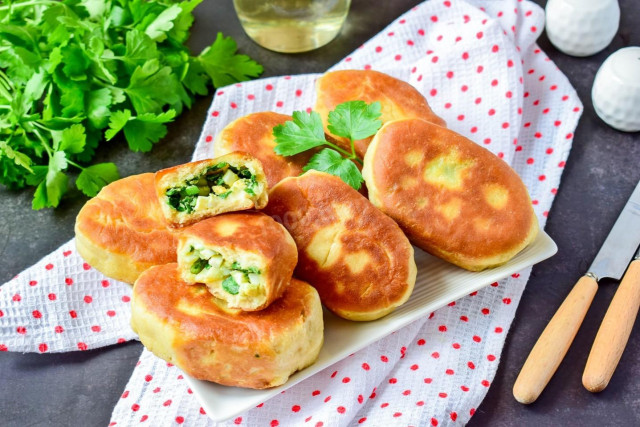Composition / ingredients
Step-by-step cooking
Step 1:
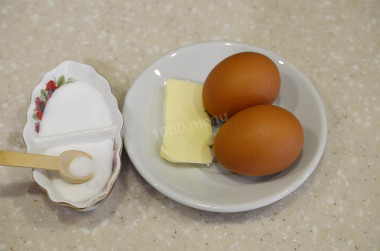
How to fry an omelet without milk in a frying pan? Prepare all the necessary products. To make an omelet, take larger eggs, preferably homemade: homemade eggs have a brightly colored orange yolk and the omelet will turn out to be a beautiful saturated yellow color. Otherwise, the finished dish will turn out pale and ugly!
Step 2:
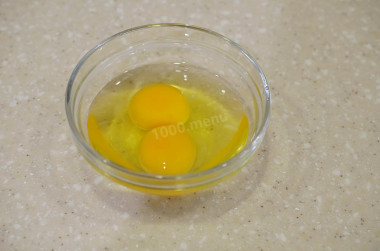
Wash the egg well and be sure to check for freshness. Fresh eggs are heavier by weight, and long-standing ones are light, as if dried up inside. To check, put the egg in water at room temperature: a fresh egg will sink, a stale one will float to the surface. Beat the eggs into a bowl. Take the bowl deeper so that the egg mixture does not spill out of it.
Step 3:
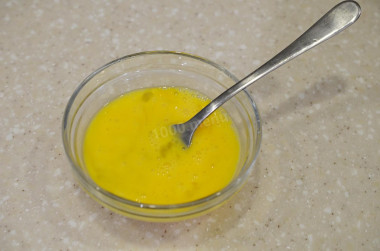
Beat the eggs with a fork, it is with a fork - it is necessary to beat it lightly.
Step 4:
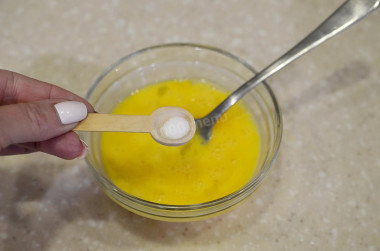
Salt the egg mixture. Also at this stage, you can add some seasonings to the egg mixture. Perhaps it will be dried garlic, dill and other herbs. And maybe some herbs: thyme, rosemary, tarragon! Focus on your taste!
Step 5:
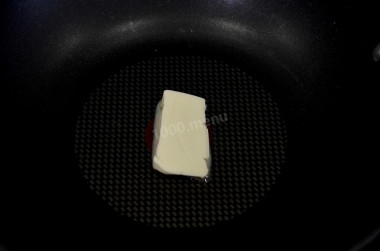
Add butter to the omelet pan. It is advisable to use a frying pan with a non-stick coating.
Step 6:
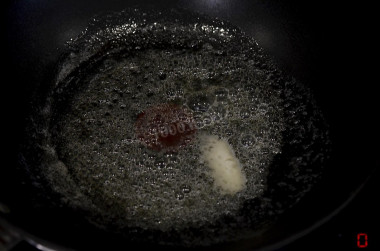
Melt the butter completely.
Step 7:
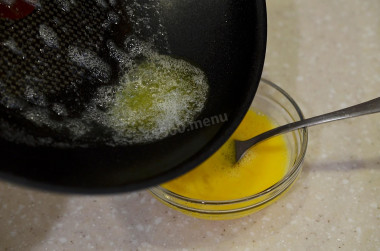
Pour the melted butter into the egg mixture, stirring constantly.
Step 8:
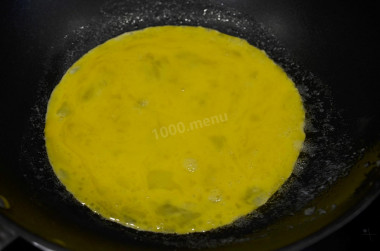
Pour the egg mixture into the same pan where the butter was melted. Cook over low heat on only one side, trying to make the omelet completely baked.
Step 9:
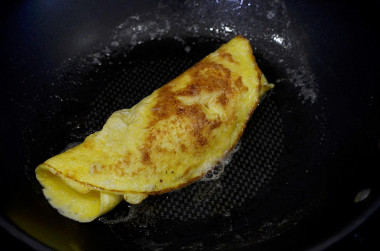
Roll the omelet into a roll, fry again on all sides. If necessary, bring to full readiness under the lid.
Step 10:
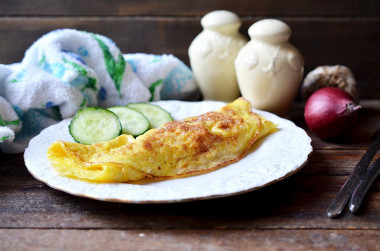
Put the omelet on a plate and serve hot. It's great to serve such an omelet for breakfast or afternoon tea for both adults and children. It is quickly and simply prepared and always turns out. Enjoy your meal!
Such a thin omelet, served in the form of a roll, is great for a family breakfast. Also, the omelet turns out to be thin and very tender, so it is also suitable for use as egg pancakes with stuffing or for salads.
Important! An incorrectly selected frying pan can ruin even the best recipe. All the details on how to choose the perfect frying pan for different dishes read here .
Any oils are useful only until a certain temperature is reached - the point of smoking, at which the oil begins to burn and toxic substances, including carcinogens, are formed in it. How to determine the roasting temperature and choose the best oil for frying, and which is better not to use at all, read here .
Be sure to wash the eggs before use, as even the seemingly clean shell may contain harmful bacteria. It is best to use food detergents and a brush.
Caloric content of the products possible in the composition of the dish
- Chicken egg - 157 kcal/100g
- Egg white - 45 kcal/100g
- Egg powder - 542 kcal/100g
- Egg yolk - 352 kcal/100g
- Ostrich egg - 118 kcal/100g
- Butter 82% - 734 kcal/100g
- Amateur unsalted butter - 709 kcal/100g
- Unsalted peasant butter - 661 kcal/100g
- Peasant salted butter - 652 kcal/100g
- Melted butter - 869 kcal/100g
- Salt - 0 kcal/100g

